Managing all the active projects in a company can become overwhelming, even if you’re only pursuing a couple of projects at a time. It can be hard to keep track of all the tasks, product goals, team members, and more. That’s why using project management software is the ideal solution for project efficiency.
Depending on your industry, the software used for project management may change a little. You’ll find that there is some industry-specific project management software.
However, they’re mostly limited to industries like the financial services or healthcare industry. All other industries rely on the project management software found online.
That’s why in this article, we’ll go over what project management software are, along with the best project management software you can use today.
Let’s get started.
What is Project Management Software?
Project management software is any software that’s designed and used for project planning, task management, resource allocation, and scheduling.
The software is designed to assist project managers and product managers in controlling their teams, budgets, and documentation, while also overseeing quality control. It also allows them to improve cross-collaboration among various project stakeholders in real-time.
While there are lots of PM software in the market, they are all built on a specific methodology. For example, you’ll find that one software focuses on agile methodology and another focuses on Scrum management. That’s why you’ll find project management tools like Kanban boards, timesheets, and collaboration tools in some software, but not in others.
Managing projects requires a certain level of collaborative effort, superior task management, expert resource management, project planning, and a great project team. Complex projects tend to require even more from team members as the need for automation, time-tracking, and similar functionality increases.
Ideally, project management software should also offer customizable project templates, communication channels (like Slack), third-party integration (with Dropbox, Google Drive, and Outlook, for example), and complete workflow management. More importantly, it should be completely user-friendly; that means the workspace should be simple, easy to navigate, and quick to manage.
After all, the software is expected to make a product manager and project manager’s job easier, quicker, and more efficient. When you streamline project management through a project management system, it gives you more time to work on other stuff that requires your attention.
Project Management Software Essentials
We have a brief idea of what project management software is and what it does for organizations. Now, it’s also important to understand what your software should offer you.
In all cases, the following five things should be present in all project management software.
Schedules
The key to any successful project is effective scheduling, and that’s why the first thing you should notice is the scheduling options. You’ll find everything from milestone tools to calendars and Gantt charts. You’ll find this in every PM software, but you’ll have to see the one that fits with your project/company style.
Task Management
Every project is divided into various tasks and subtasks that need to be properly assigned. Every PM software will have a task management system, but you’ll have to see where you can easily set up tasks, update them, track them, and manage them.
Communication Tools
Communication and collaboration tools are crucial because they ensure the project team and stakeholders are on the same page. It’s always a good practice to check what software offers the best communication management and team collaboration tools.
File Sharing
To stay in the loop, team members need to be able to share files, documents, and other stuff in real-time with the click of a button. A large part of effective time management is to have a fast and easy file-sharing system.
Reporting and Metrics
Project updates are critical when you need to update someone on the progress or make any unplanned changes. That’s why every PM software has a reporting tool and metrics to check the overall progress, timeline, and project completion rate.
It doesn’t matter whether you’re managing a SaaS company, GitHub project, Android/iOS app, or several small businesses; your project management solution needs the functionalities listed above.
Now that you have a comprehensive idea of what your project management software would and should look like, you can check out some of the best project management software you can use.
12 Best Project Management Software You Can Use Today
The following list includes not only the most popular but also the best project management software you can use. Each software has a unique aspect to it; however, all of them offer basic project management options.
1. Asana
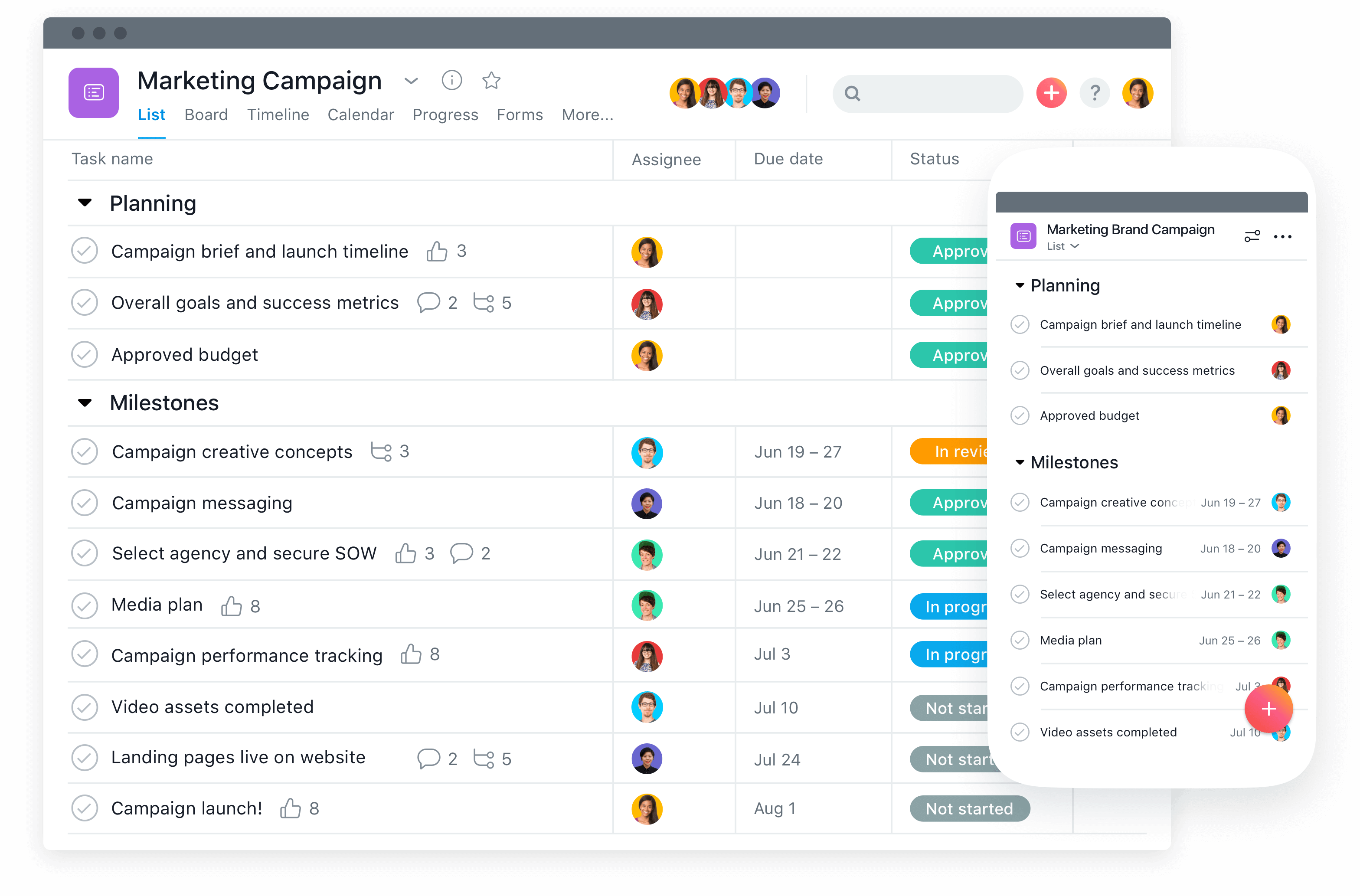
Asana is an extremely versatile project management software that’s designed to be user-friendly and easy-to-use for businesses and teams of all sizes and sorts.
You’ll find the usual in the software, including task management, project allocation, dashboards, and conversation tools. You can effectively add custom fields and track the things that matter to you the most; you can prioritize the track progress.
Furthermore, Asana is best known for its collaborative support with things like Team Pages – a place where conversations and ideas can be shared. Other than that, you’ll find a Smart Box where team members can receive relevant project updates and can track the messages between other team members.
More importantly, Asana has one of the best third-party integration support where you can integrate with systems like MailChimp, Google Drive, Dropbox, GitHub, Microsoft Excel, and more.
Asana’s Key Features
While Asana has the basic features of any PM software, the following are some of its best and unique features.
- Easy team assignment and task management
- Complete milestones and team progress tools
- Project timelines and roadmaps
- Project dashboards for quick overviews
- Easy filing and tracking of sprints, bug reports, and more
The features above are what Asana stands out in; you’ll find those features in most PM software, but Asana provides these features in a more user-friendly way.
Asana Pricing
The best thing about Asana is that it’s completely free for up to 15 members.
However, if you have more users than that, the paid plans start from $13 per user per month.
Other than that, you can get Asana’s premium package at $9.99 per month or an enterprise package that is tailored according to your company or project needs.
Visit Asana.
2. Wrike
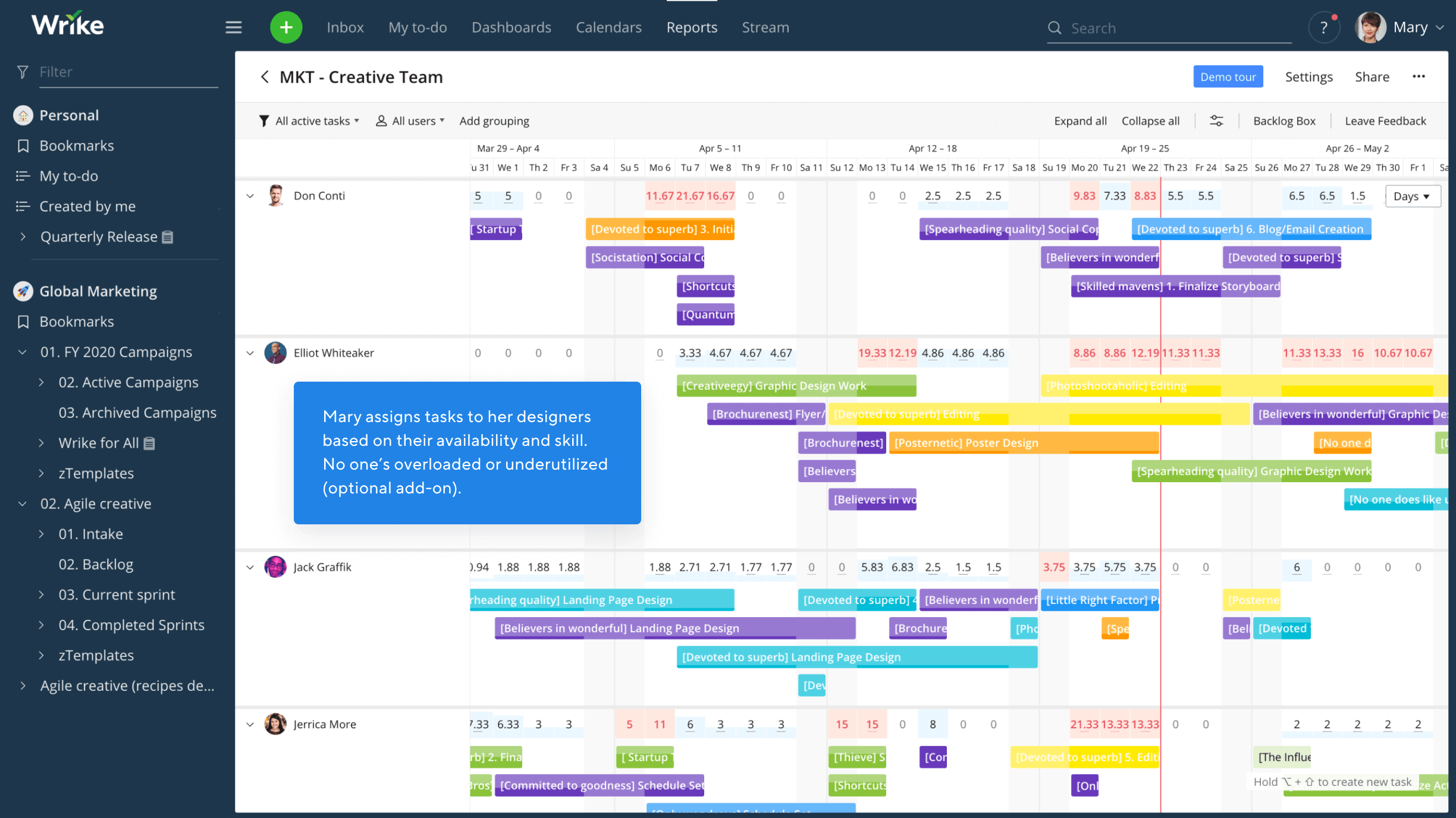
Wrike is an online project management and collaboration software designed to assist users track the progress of day-to-day operations. The cloud-based software is better known for effective project management based on time frames and budgets.
The software can be easily integrated with third-party software tools. More importantly, it has a project management app that helps transform emails into tasks. You can also use that feature to create, develop, assign, or edit tasks and documents.
Wrike’s Key Features
Wrike is known as the best project management software for when you want to scale your organization or project. The following are the best-known features of Wrike.
- Comprehensive yet holistic task modeling
- Complete customizability
- Various data visualization methods
- Pre-built native integrations (over 400)
- Intuitive and interactive dashboard and interface
Wrike is designed to be easy to use for small teams looking to quickly scale operations.
Wrike Pricing
In total, Wrike has five different levels.
- Free Version – 1-4 users
- Professional – 5-15 users at $9.80 per user per month
- Business – 5-200 users at $24.80 per user per month
- Marketers Version – $34.60 per user per month
- Enterprise – Customized pricing upon request
Each model is slightly different to accommodate for varying needs.
Visit Wrike.
3. Celoxis
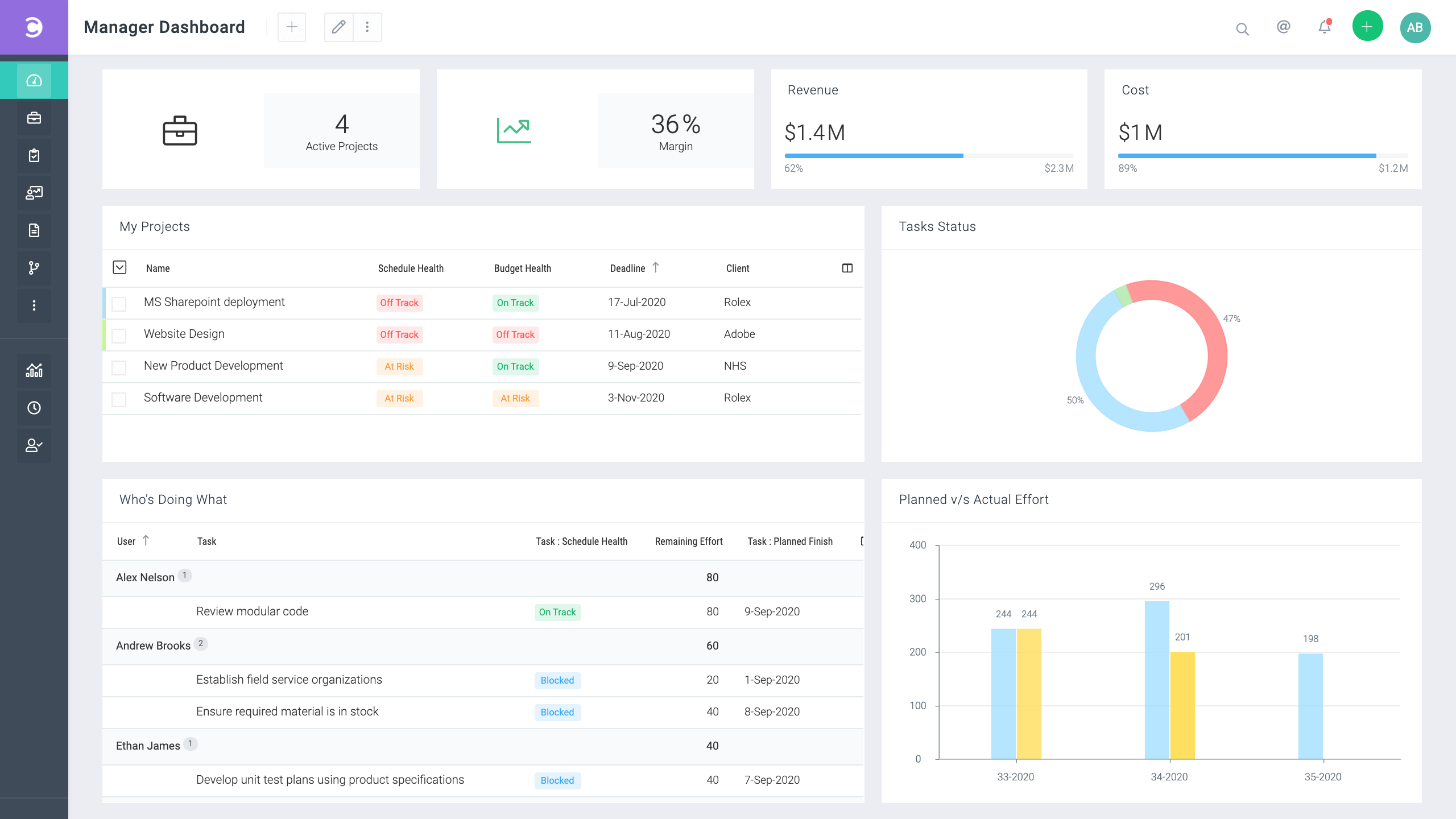
Celoxis is a well-known project management software that’s most popular for being straightforward with an extremely responsive interface. You’ll find a lot of financial tools and a Gantt chart view of all projects that help track project budgets, income, and hours.
The software also has an online version where users can self-host data. With its advanced reporting engine, time-stamped data, extensive chars, and shareable reports, Celoxis is an excellent PM software.
Celoxis’ Key Features
Known as one of the best PM software in the world, Celoxis offers basic project management features in an extremely streamlined manner. The following are some of its top features.
- Gantt charts for all projects
- Advanced scheduling for task-tracking
- Complete financial management
- Project tracking
- Extensive reporting analytics
The best part about Celoxis is that it offers both On-Premise and SaaS options.
Celoxis Pricing
Celoxis offers two different pricing plans.
- Cloud Solution – $22.50 per user per month
- On-Premise Option – $450 per user for a one-time payment
The On-Premise solution has a self-hosting service.
Visit Celoxis.
4. ClickUp
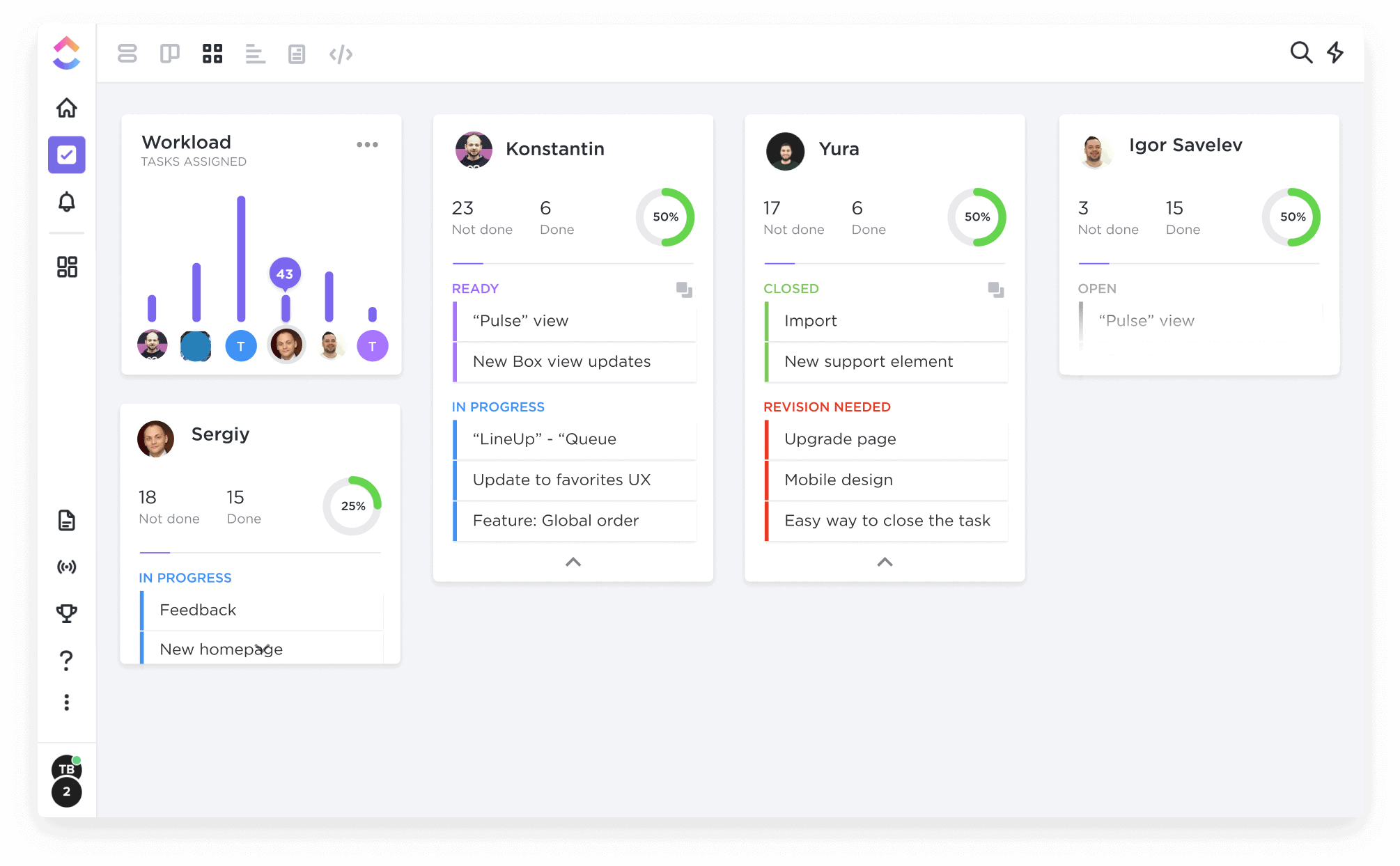
ClickUp is a complete PM software focused on task management with customized workflow management. You can assign tasks according to various workflows and add different dependencies for each task.
This tool is specifically designed for people who use agile methodology. You can quickly manage your resources, sprints, workload on your team, and more.
The good thing about ClickUp is that it’s designed for organizations of all sizes. That means you can practically use it for a project or projects of any size and shape.
ClickUp’s Key Features
As ClickUp is more focused on efficient task management, its key features are also related to task management. The following are some of the most notable features of the software.
- You can assign multiple comments to every task
- There are three different views, including a Board, Box, and List view
- Easy-to-navigate project hierarchy
- 52 different customization features
- Productivity tools like Smart Estimates and Smart Search
ClickUp offers one of the best user experiences with an absolutely beautiful dashboard design.
ClickUp Pricing
There are three different versions of ClickUp.
- Free Plan – Offers up to 100MB
- Premium Plan – $5 per user per month
- Business Plan – $10 per user per month
It’s best to opt for the business plan in most cases.
Visit ClickUp.
5. LiquidPlanner
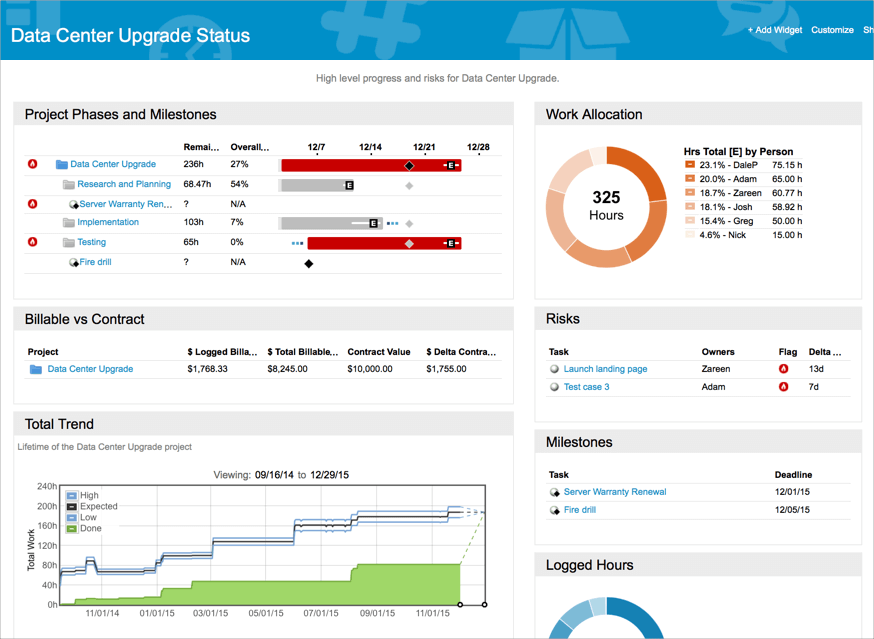
LiquidPlanner is one of the most well-known collaboration tools that have built-in time-tracking and project management capabilities. The software adapts to your project or business to help make management easier.
Whenever you make changes to the resource allocation or priorities, the software automatically adjusts all the settings. Furthermore, you can check out various insights related to the project’s progress, get cross-project visibility, and manage budgets and risks simultaneously.
The advanced analytics helps users view costs, profit, client portfolios, baseline trends, project performances and monitor resource allocation.
LiquidPlanner’s Key Features
LiquidPlanner helps project teams set up attainable deadlines based on various scenarios. Other than that, a few notable features of the software include the following.
- Schedule and task comments
- Real-time and realistic time ranges for task completion
- Collaboration boards for each task
- Can add customized notes to each project
- Adjust according to different scenarios
The software also has a great messaging system.
LiquidPlanner Pricing
The company offers three different packages based on the required features and team size.
- Small Team – $9.99 per month
- Professional – $39 per month
- Enterprise – $69 per month
The prices above may be subject to change in some cases.
Visit LiquidPlanner.
6. Smartsheet
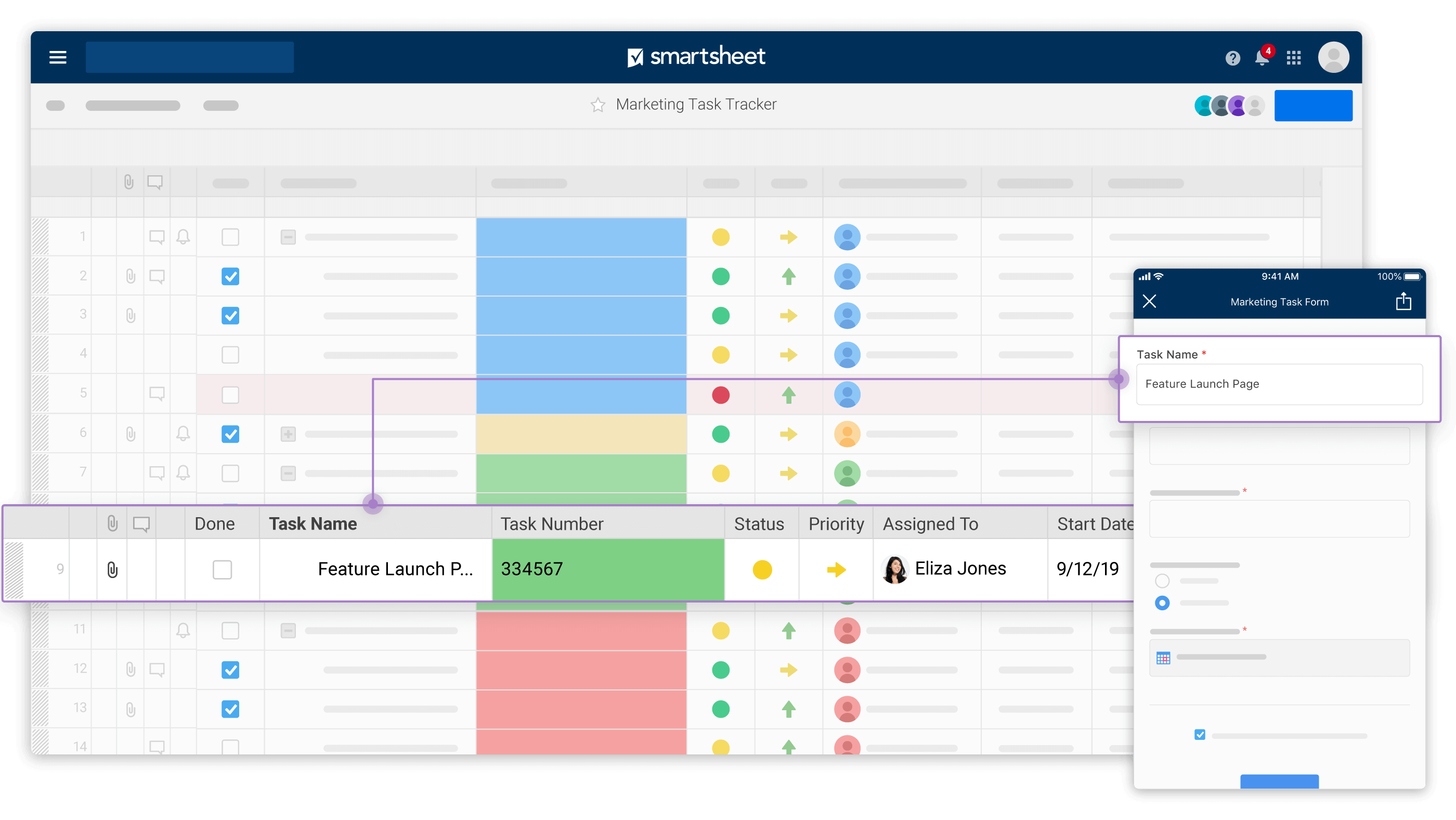
Smartsheet is a spreadsheet-based project management solution that’s designed to make work execution easier. It’s mainly used for managing and automating all kinds of collaborative work among projects.
The spreadsheet layout is easier to manage for people used to spreadsheets in general. It’s much easier to manage tasks with various views like Gantt charts. You can instantly take a look at the deliverables, due dates, invoicing, and more.
Smartsheet’s Key Features
One of the most unique features you can find with this software is that it has conditional formatting tools; it allows you to define project parameters through a fill-in-the-blank style. Other notable features of Smartsheet include the following.
- Complete project plans and scheduling options
- Aggressive resource management
- Budget tracking
- Program rollups
- Strategic planning options
You can also set up advanced workflow automation rules to reduce the onset of repetitive tasks and improve efficiency.
Smartsheet Pricing
There are two different pricing plans.
- Business Plan – $25 per user per month
- Enterprise Plan – Custom plans with custom prices
Unless you have a massive project or company, you should opt for the business plan.
Visit Smartsheet.
7. Zoho Projects
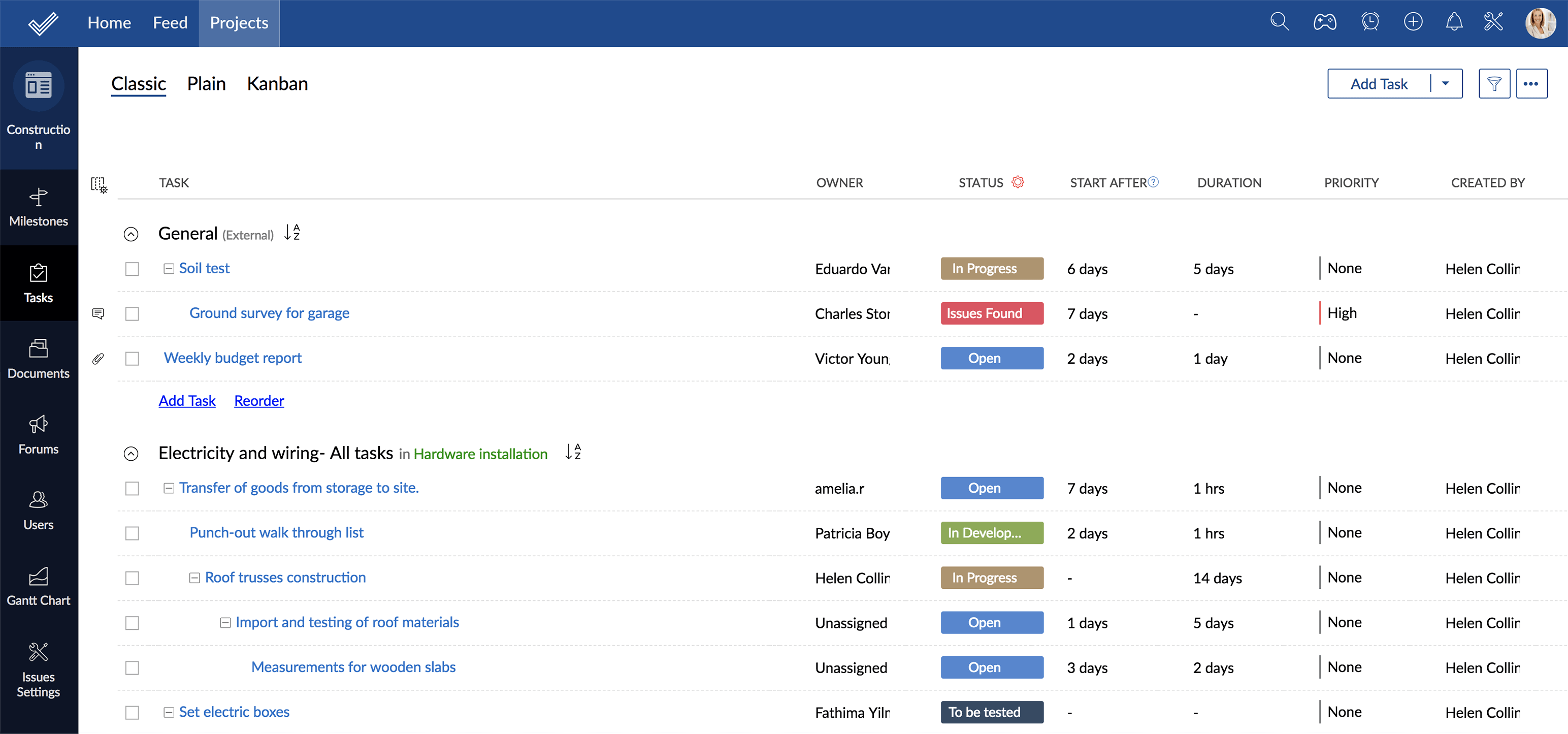
Zoho Projects is a powerful PM software that has one of the cleanest and easy-to-use interfaces. Meanwhile, it has every relevant feature like project planning, Gantt charts, collaboration software, reporting tools, documentation management, and more.
The software supports complete third-party integration with various tools like Dropbox, Google Apps, and more. The software can effectively help companies streamline all upcoming tasks and work and make their processes more efficient.
Zoho Projects’ Key Features
If you integrate Zoho Projects with Zoho CRM and other tools, you can practically have a one-in-all system for your company and its projects. Other relevant features of the software include the following.
- Complete time-tracking and timesheets
- Gantt charts for better data visualization
- Document and file management systems
- Task lists with multiple subtask lists and milestones
- Massive integration potential
Zoho Projects is one of the most easy-to-navigate PM software out there, making every project manager’s job slightly easier.
Zoho Projects Pricing
In total, Zoho Projects has four different types of plans.
- Free Plan – You can set up two projects and use 10MB of storage space with three users
- Premium Plan – $5 per user per month (up to 50 users)
- Enterprise Plan – $10 per user per month (unlimited users)
You get a lot of premium features like portfolio dashboards, custom fields, and more if you opt for paid plans.
Visit Zoho Projects.
8. Trello
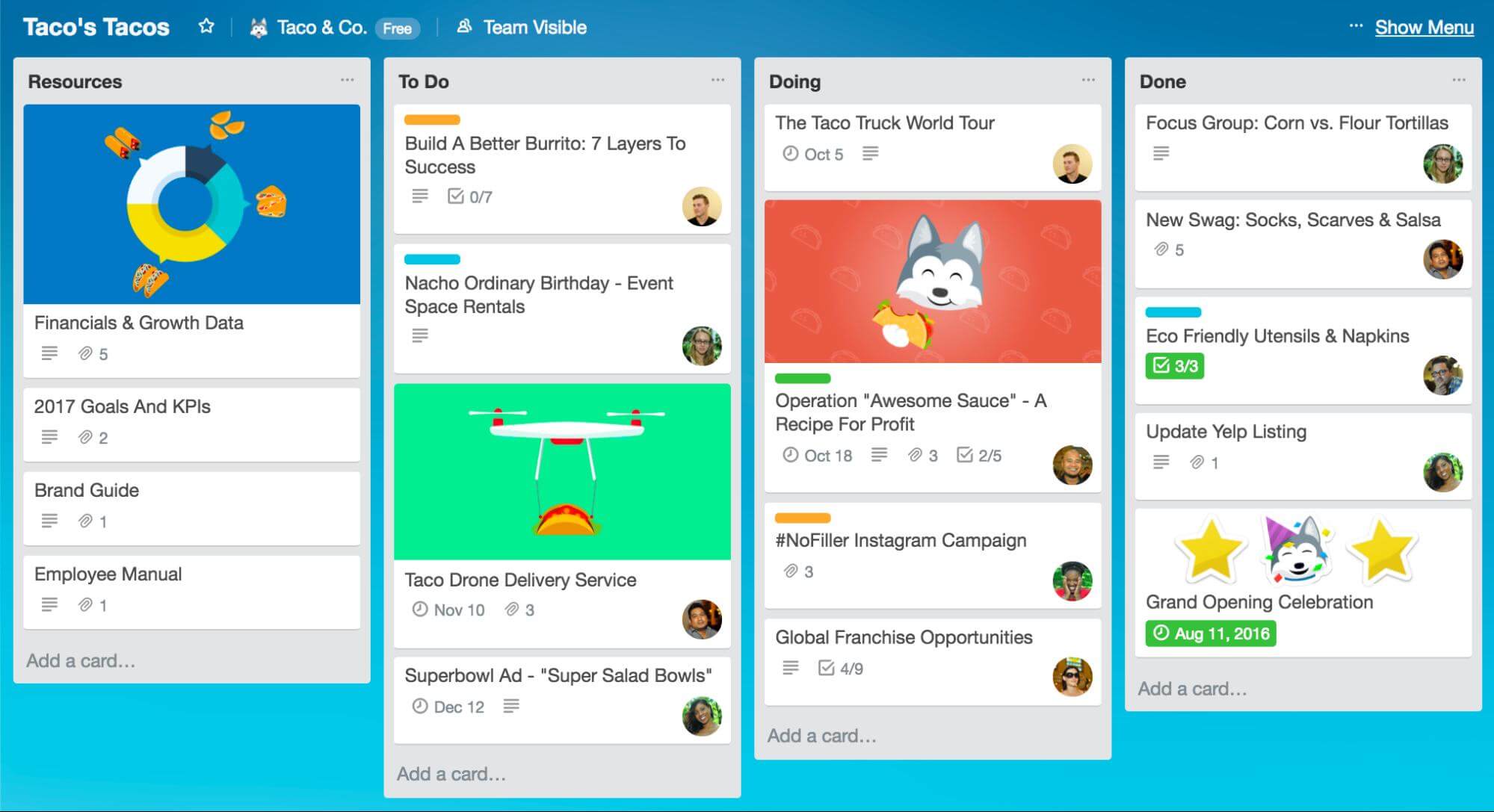
Trello is a slightly different PM software that is better known as an online Kanban tool. That’s because the software provides you with a single view that has the entire project’s information.
Since it is technically a board, you can move your cards around with a drag-and-drop option. These cards are for to-do lists, conversations, tasks, and more.
It’s a great software for managing everyday tasks quickly and efficiently. That means it’s best for smaller projects or projects that can be divided into shorter tasks.
Trello’s Key Features
The biggest selling point of Trello is the way it visualizes all the relevant data for teams to instantly collaborate. Other features of Trello include the following.
- One-in-all cardboard-style task management
- Image and file-sharing support
- Unlimited task lists
- Commenting and collaboration for better teamwork
- List organization options according to priority and dates
While Trello has a wide range of features, it’s still best to use it for smaller projects.
Trello Pricing
Trello has three different pricing plans.
- Free Plan – For personal use with unlimited boards, card, lists, and members
- Business Plan – $10 per user per month with unlimited power-ups
- Enterprise Plan – Customized plans for bigger companies
Paid plans have additional features like dashboard views, timeline views, advanced checklists, and more.
Visit Trello.
9. Jira
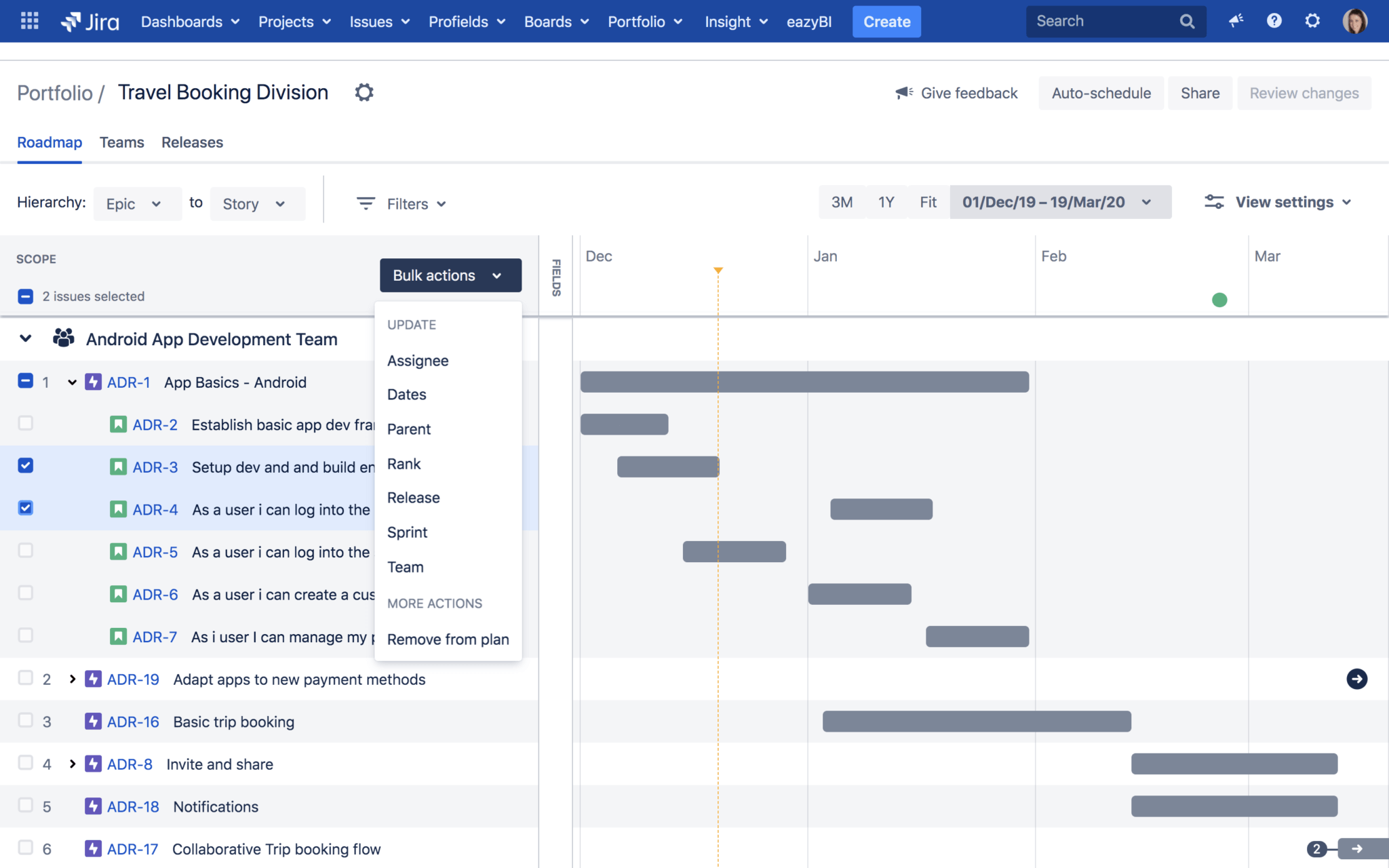
Jira is another project management software that’s designed for agile software development teams. As a result, you’ll find Kanban boards, real-time agile reporting, customizable scrum boards, and more.
Furthermore, each user can individually view outstanding issues, track bugs in development, and monitor the time spent by the team on each task. You will also find a proper set of APIs that let the user connect it with third-party software.
However, most software companies use Jira as a bug tracking and cross-platform issue software while also taking advantage of its project management solution.
Jira’s Key Features
Jira is an ideal example of PM software designed for a specific industry. It’s considered to be an IT project management tool designed for software development teams. Other notable features of Jira include the following.
- Centralize all team collaboration and communication
- Create and edit user stories and issues; plan sprints along with it
- Prioritize your team’s work and discuss it online
- Distribute tasks easily
- Real-time reporting
It’s one of the only PM software that’s specifically designed for the IT industry.
Jira Pricing
Jira has four different plans.
- Free – For up to ten users
- Standard – $7 per user per month
- Premium – $14 per user per month
- Enterprise – Custom plans with custom pricing
Al paid plans can have up to 10,000 users.
Visit Jira.
10. monday.com
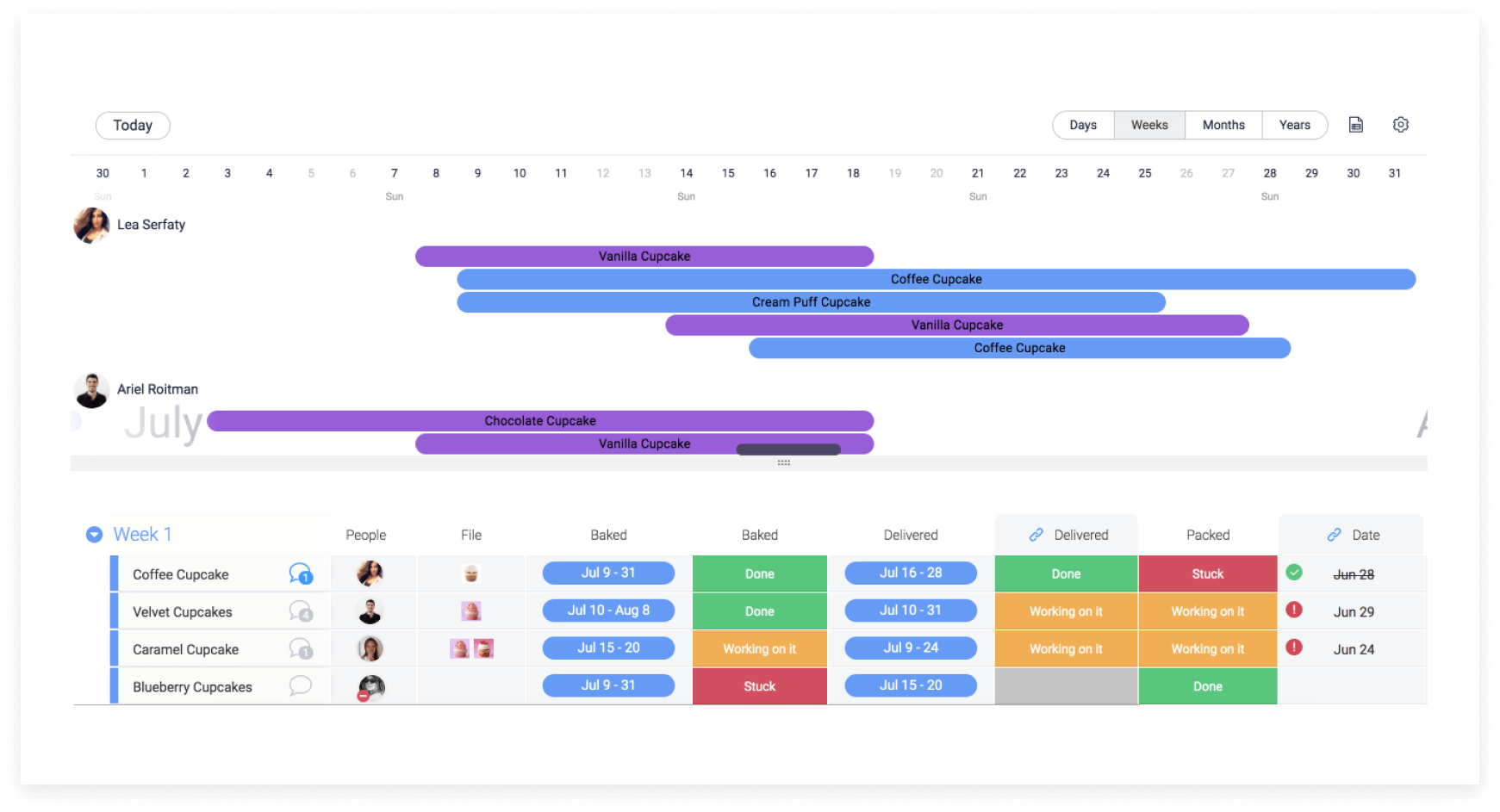
monday.com is a one-in-all work OS that is known to improve the efficiency of projects and companies. You can create your personal workflow based on your custom work OS. It helps you visualize, highlight, and analyze various elements, including locations, text, time management, and more.
Your entire team can systematically work together and share relevant files and recordings of conversations and documents.
You can get everything from project planning to product planning through simple task management. You can even construct tools to meet specific operational requirements.
monday.com’s Key Features
In essence, monday.com lets you build custom work applications and tools for any workflow without any coding involved. Other features of the software include the following.
- Various views of projects, including Kanban, map, and Gantt views
- Hundreds of ready-made templates for projects
- Easily shareable forms
- More than 40 integrations
- Apps framework so developers can create their own apps (for Macs, Windows computers, smartphones, and more)
The software proves to be a great visual platform for teams.
monday.com Pricing
There are four different pricing plans.
- Basic – $8 per seat per month
- Standard – $10 per seat per month
- Pro – $16 per seat per month
- Enterprise – Customized plans with custom pricing
Instead of users, monday.com’s pricing works per seat; for example, you can choose 3, 5, or 10 seats or more.
Visit monday.com.
11. Basecamp
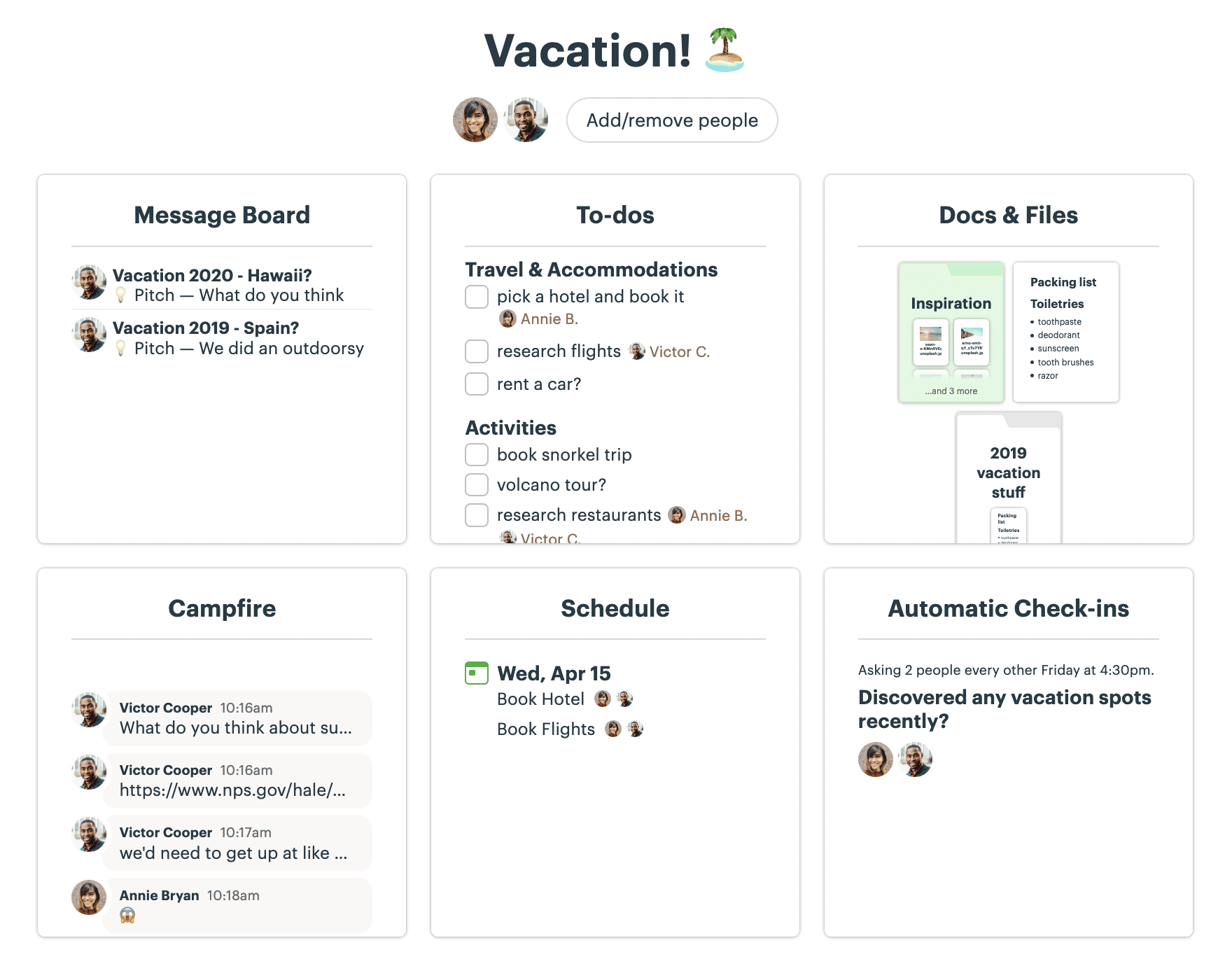
Basecamp is currently used by thousands of project management teams because it has a social-media-like interface. That allows users to take advantage of better team collaboration features. Things like a designated discussion area allow users to communicate, leave comments, and more.
You can also easily get a recap of all the current tasks and projects your team is working on. You’ll receive updates and statuses through email. Meanwhile, you can also start discussions in the email.
The best thing about Basecamp is that its search tool is extremely effective. However, there are limited customization options and no option to add milestones and timeframes.
Basecamp’s Key Features
Basecamp is best known for having a different pricing system where they don’t charge you per person. More importantly, it’s free for students and teachers. Other than that, some notable features of Basecamp include the following.
- Separate dashboards for users and clients
- Desktop and email notifications
- Message boards
- In-app communication and collaboration
- Easy reporting
- Multiple user work management
Couple those features with a great visual style, and you get a great PM software.
Basecamp Pricing
Basecamp’s pricing works a little differently.
- It’s free for teachers and students.
- Basecamp Business costs $99 per month, regardless of the total number of users.
It’s one of the few software that offers unlimited users at a flat rate.
Visit Basecamp.
12. Paymo
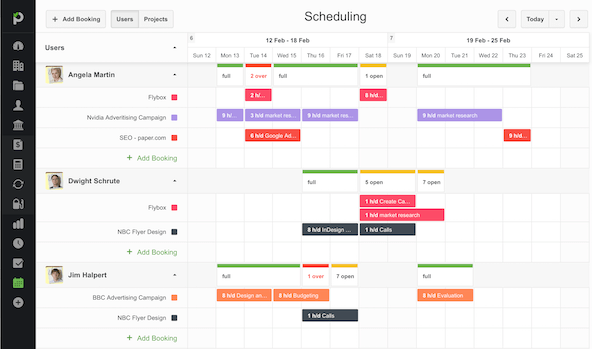
Paymo is an extremely powerful project management software that focuses on time billing and work reporting. Built for small to medium-sized businesses, Paymo has a great time tracking solution that allows for superior task management.
The software allows for expert resource management, easy scheduling, and access to various budgeting tools based on hourly rates or fixed prices.
Paymo’s Key Features
Paymo has a great option where you can automate your time tracking, but that’s part of Paymo Plus. Other than that, some of Paymo’s best features include the following.
- Expert work reports
- Intuitive dashboards to track team performance
- Complete time tracking of projects and tasks
- Integrated project accounting and budgeting
- Automated customer billing for completed tasks
When you download Paymo’s desktop app, it lets you track all your time entries, overall PC usage, and more.
Paymo Pricing
Paymo has two different pricing plans.
- Small Office – $9.95 per user per month with no user limit
- Business – $15.79 per user per month with no user limit
The business plan provides some additional features like free onboarding, increased storage, employee leave management, and more.
Visit Paymo.
Choosing the Best Project Management Software for Your Organization
Every organization has multiple projects at any given time that require expert management. When you have agile product owners, project managers, technical product owners, and other stakeholders on your team, you need them to be on the same page at all times.
In order to launch any product or project, you need a computerized task management system. That’s how you can make sure you successfully deploy your product strategy.
Choosing the right project management software for your project or company depends on your industry, team size, and type of project.
Most of the time, it’s more about a company’s budget because the per-user pricing model can get expensive really quickly. In that case, it’s best to opt for a software that offers flat pricing models so you can focus on product management.
Depending on your project/s, you should choose a project management software that’s within your budget and one that your team is comfortable using.